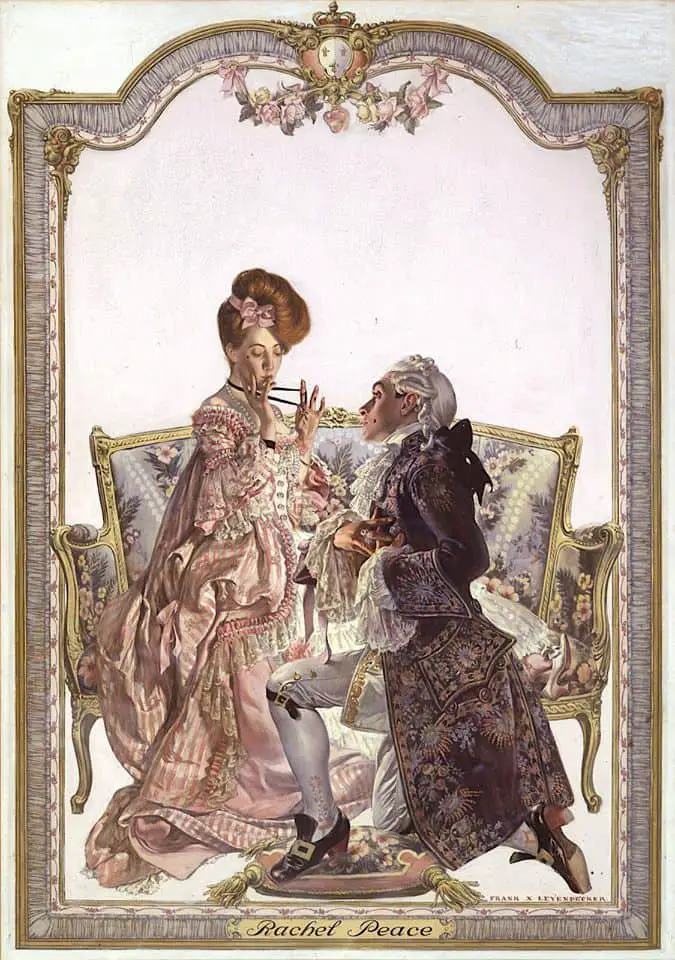“Poison” (1920) is a short story by Katherine Mansfield, the last in the Something Childish and Other Stories collection, published by Middleton Murry four years later, after her death. Commentators have noticed veiled references to “My Last Duchess“, a poem by Robert Browning about a murderous duke. Browning’s poem in turn is based on popular imaginings surrounding historical events involving Alfonso, the Duke of Ferrara, who lived in the 16th century.
Literary and Historical Allusions
In Browning’s dramatic monologue of a poem, a duke is showing a visitor around his castle. They stop in front of a painting of his dead young wife and the story becomes ekphrastic. At first the duke describes his dead wife in glowing terms. But as the poem progresses, we are meant to realise it was the duke who killed her. This is the story of a coercively controlling man. He didn’t like how his wife flirted with everyone (according to him). The poem is especially disturbing because the visitor has arrived to negotiate the duke’s marriage to yet another young woman, and we extrapolate that he may kill her, too. It’s basically a Bluebeard story.
Likewise, the real Duke of Ferrara may have been a Bluebeard figure of the Italian Renaissance. He married three times and never had children. Some historians think he may have poisoned his first wife when she was just 17. His next wife died from tuberculosis, but the third outlived him. But who else might the Duke of Ferrara have poisoned? These powerful men lived in an era of unmitigated power.
Browning forces his reader to become involved in his poem in order to understand it, and Mansfield asks the same of us in “Poison”. What’s going on behind the words? Who is wearing the mask?
When it comes to the turbulence of emotional valence, some commentators are reminded of “Ode to a Grecian Urn” by John Keats. In Keats’ poem, as in “Poison”, a character is almost tortured by the extent of their own happiness. (Happiness as anguish.) The character is anguished because they know a deliriously happy moment can never last. It’s always punctured by something.
Oh, God! What torture happiness was — what anguish!
Connection To Mansfield’s Own Life
It’s difficult to separate the author from her work. Some Katherine Mansfield biographers feel that “Poison” is covertly about her relationship with John Middleton Murry, Mansfield’s long-term male partner. They were pretty turbulent as a couple.
I’m reluctant to go there myself, because writing “Poison” may have simply been a cathartic act. Perhaps Mansfield read Browning’s poem and imagined that one of his wives killed him off instead. There’s certainly plenty to be angry about when it comes to partner violence. Mansfield may have been doing an Angela Carter, who turned victimhood of “Bluebeard” right around in her re-visioning of the archetypal tale: Carter called hers “The Bloody Chamber“.
Significantly, the fictional newspaper article in this story flips the general feminine connection to death by poison, because this time it is a man who may have poisoned his wife:
Either some man did or didn’t murder his wife, and twenty thousand people have sat in court every day and two million words have been wired all over the world after each proceeding.
SETTING OF “POISON”
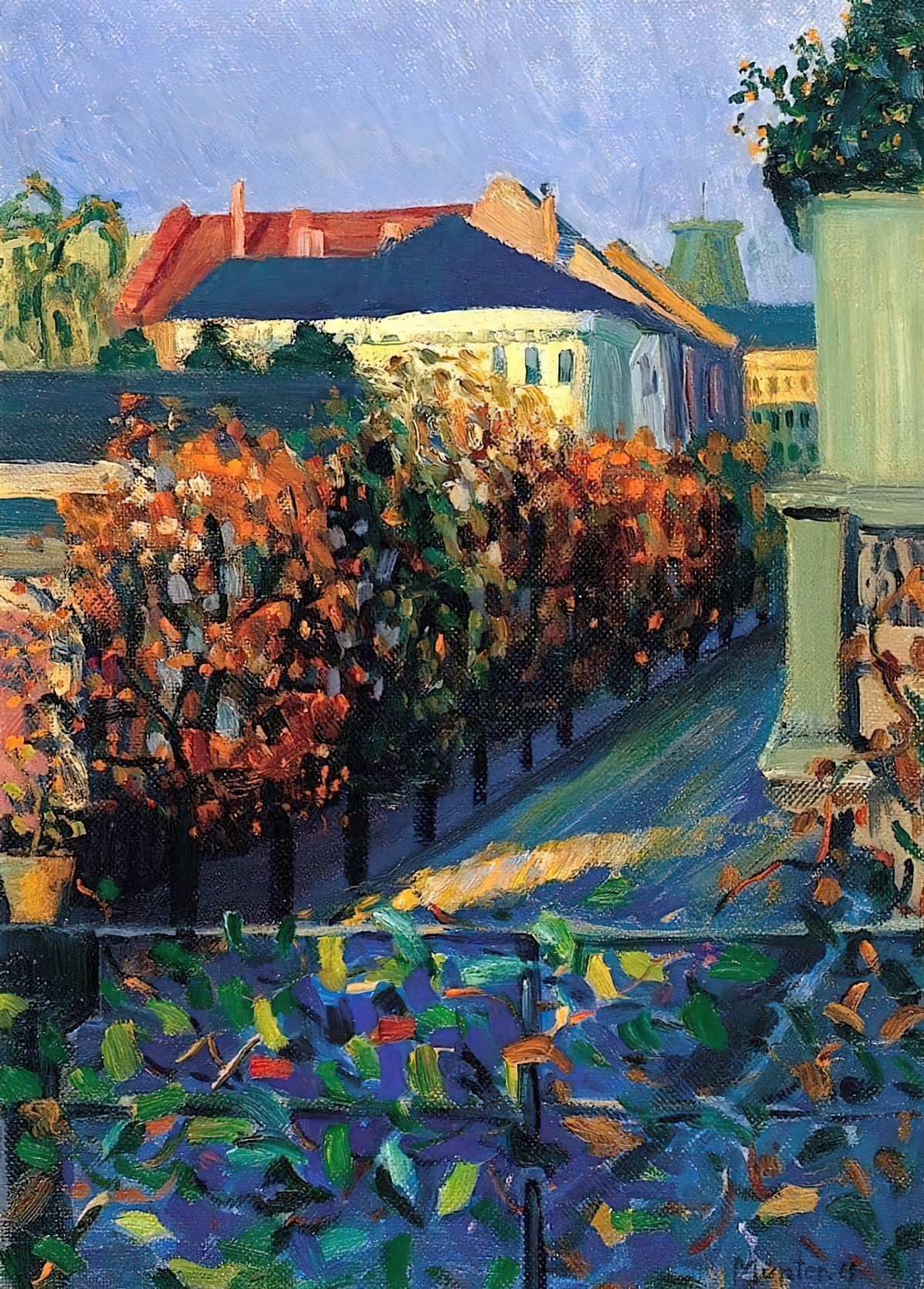
France is synonymous with romantic stories, then as it is now. A villa in Southern France is the perfect setting for this guy to carry out his romantic fantasies.
Mansfield paints a setting but in words, and the words she uses put us in mind of Impressionist paintings. A good description of an Impressionist painting: It’s like you only got a glimpse of a scene. You are left with an overall ‘impression’, rather than fleshed out details, as in a dream.
There’s a lot of white, a lot of green in the setting of this story. We’re seeing this image through tulle (net) curtains. We’re shown moonlight, shadows, lamps, twilight in the narrator’s imagination.
Apart from the flowers and birds (commonly used across Mansfield’s short stories), Mansfield chooses two details of the environment which come up more than once and are therefore probably motifs: the blue beetle and the pearl ring Beatrice wears on her third finger.
Pearls are found in oysters — hard to crack open. Pearls suggest containment and also working hard for rich reward. Over the course of “Poison” our narrator prizes Beatrice open a little. Ignoring subconscious misgivings, he continues to see her beauty shining from within.
The motif of the blue beetle is less clear to me. Mansfield may be talking about the Hoplia coerulea, found in humid environments, generally near a stream or a swamp, in Southern France and Northern Spain.

The narrator may be focusing on the beetle as a strategy to avoid dwelling on his deep fear that Beatrice is pretty far from perfect. A beetle can also look a bit like a pearl — especially certain iridescent beetles, especially when light hits them, say through net curtains on a sunshiny day. The beetle might almost be the grotesque symbolic equivalent of the pearl. The difference is that beetles crawl/fly away, whereas Beatrice’s pearl is stuck to her finger forever.
WHAT HAPPENS IN “POISON”?
With nothing else to do apart from walking around and eating snacks, two upper-class characters return to their hotel in the South of France after a walk and a poke around the shops. A servant called Annette brings them food. They wait around for the post. This is all from the point of view of an unnamed male narrator. His companion is Beatrice, a twice-before married woman who he is over-the-top smitten with.
The entire story is framed around an ironic ticking clock: the pair of them are waiting for something, actually nothing, to arrive (in the post).
“”Who? The silly old postman? But you’re not expecting a letter.”
“No, but it’s maddening all the same…
I believe ‘waiting around for the post’ is a metaphor for the narrator ‘waiting around for something to happen in his life, more generally’. By the end of the story the reader is waiting for the penny to drop with him.
Otherwise, this storytelling decision perplexes me a little. Mansfield introduces what we might deem ‘false suspense’ with all that waiting around for post. Because when the post arrives, it’s not some amazing life-changing letter, but is simply the newspaper, which they surely get everyday and is therefore not a surprise. An article in the newspaper leads to a semi-revelation for our narrator, although in true literary Impressionist form, he doesn’t have any major breakthrough. It simply sets him thinking.
Just before the newspaper arrives, conversation has turned to the couple’s future together. The narrator wants to marry Beatrice. But Beatrice remains unknowable, to both the narrator and to us. The basic worldview of Impressionists went like this: People don’t really change very much. Plus, there’s no such thing as the veridical truth of a situation anyway. We can only ever view the world through our own particular prisms. This is especially true when it comes to relationships. Two people in the ‘same’ relationship experience completely different versions of it.
Throughout “Poison”, Mansfield is playing with the various permutations of the word ‘poison’. First the narrator has a cigarette, both deliciously necessary but also a type of poison.
There are times when a cigarette is just the very one thing that will carry you over the moment. It is more than a confederate, even; it is a secret, perfect little friend who knows all about it and understands absolutely. While you smoke you look down at it — smile or frown, as the occasion demands; you inhale deeply and expel the smoke in a slow fan. This was one of those moments.
Mansfield doesn’t touch on the criminal meaning until the newspaper is opened and read — literal as in ‘putting something into someone’s food and then watching for them die in agony’.
Instead she encourages us to go there ourselves, by delving into the metaphorical meaning, in which it’s possible to poison someone invisibly. We could apply plenty of modern terms to describe this form of poisoning within a relationship: Passive aggression, emotional withdrawal, coercive control… We never hear any backstory about Beatrice’s former relationships so we don’t know the exact nature of the ‘poisoning’. We don’t even know Beatrice’s degree of culpability. However, Mansfield makes use of symbolism to give Beatrice the appearance of innocence:
She was dressed in white, with pearls round her throat and lilies-of-the-valley tucked into her belt.
Mansfield was very aware of the symbolism around flowers. Unlike lilies, lilies of the valley most often symbolise chastity, purity, happiness and humility.

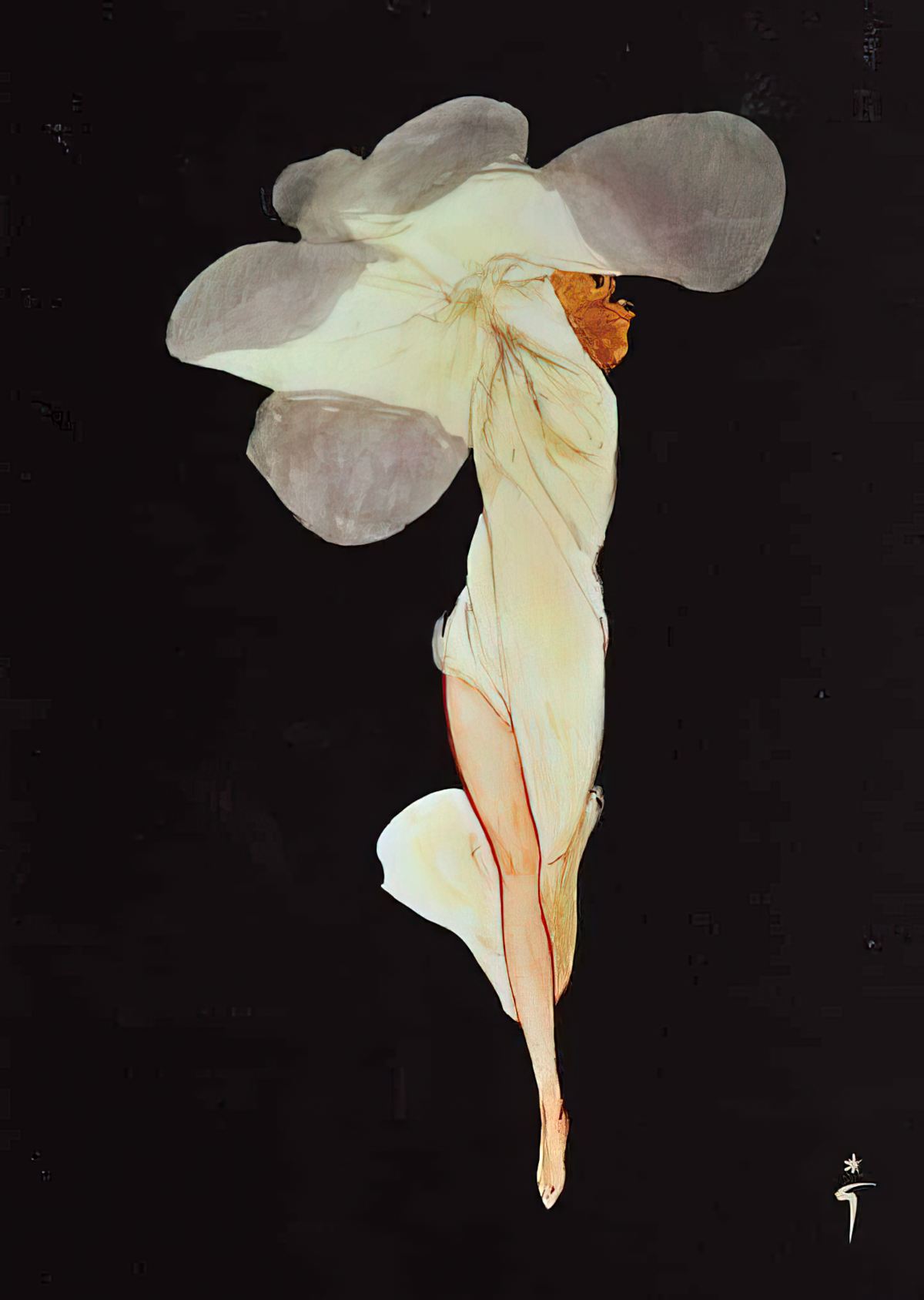
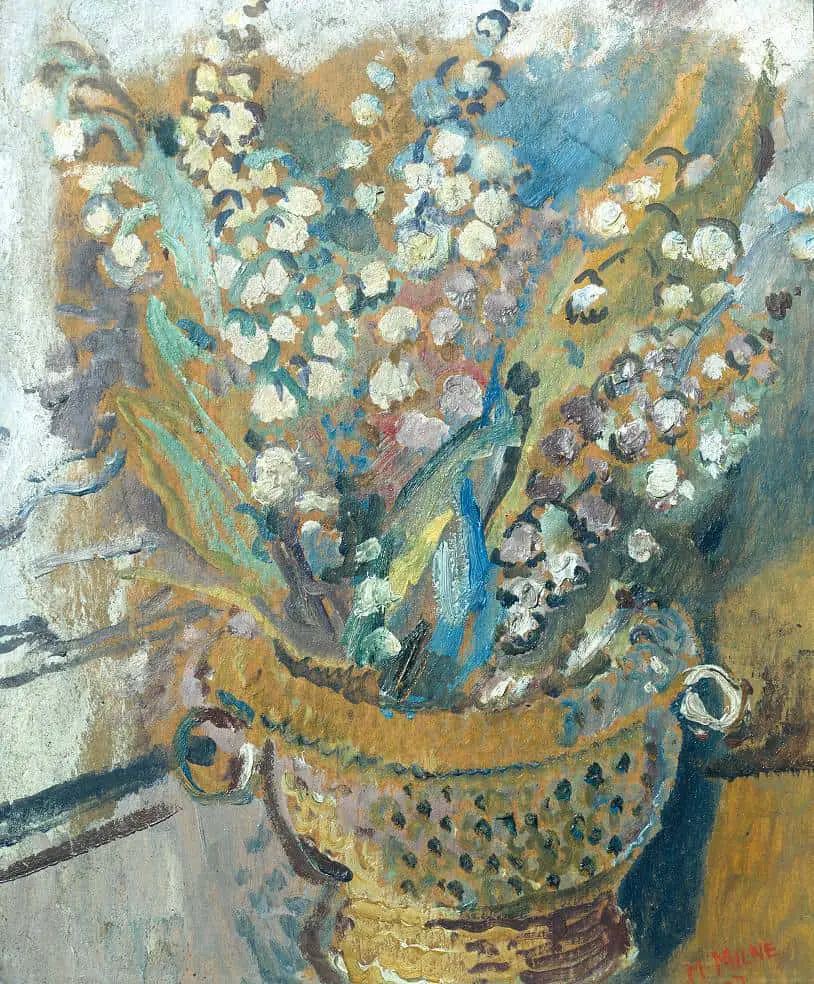
The white dress emphasises Beatrice’s innocence, and the reader will think of a wedding dress, and its associations with virginity.
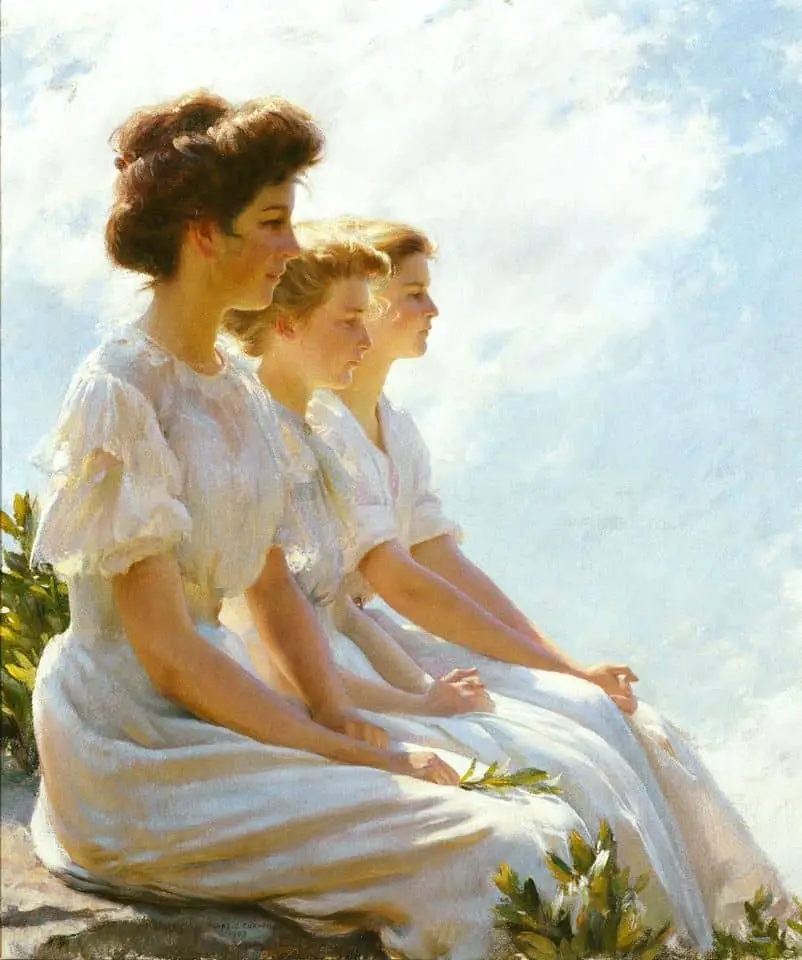
We are therefore surprised when Mansfield reveals that Beatrice has already been married twice. (This makes her a ‘fast woman’ for the era.) The flowers ‘tucked into her belt’ suggest Beatrice exercises restraint — a desirable feminine virtue. Of course, we are told these details because these are what the narrator is looking for: evidence of a good woman. (Significantly, the narrator is also dressed in white.)
But appearances can be deceptive. And people can see only what we want to see, especially when romantic love is involved. The reader is not deluded by love for Beatrice and can see infatuation. In contrast, the narrator is yet to achieve a clear-headed view of Beatrice. But by the end of the story, he seems to have understood more of Beatrice over the course of recounting their conversation ‘out loud’. This often happens in first person narratives with storyteller narrators. The very point of them telling their stories (to no one in particular) is to come to some greater understanding.
Until the newspaper arrives, Mansfield never touches directly upon the literal meaning of poison. But because she so clearly goes there in the metaphorical sense, the reader is primed to suspect that perhaps Beatrice has poisoned both of her earlier husbands. At this point, Mansfield is leaning upon an age-old trope which connects ‘women’ to ‘poisoning’.
Witches, Women and Poisoning
This notion of women as sneaky, murderous poisoners harks back to the era of witchcraft and hasn’t entirely died. During the European witch craze, women were often accused of poisoning their victims. (Men were also tried for witchcraft but in England it was 90 per cent women.) These so-called poisoners didn’t need to be anywhere near their victims in order to do away with them — these witches were supposedly making use of necromancers and magic.
Historical Women and Poisoning
I would be interested to know if Mansfield knew about the case of Louisa Collins, the last woman ever hanged in Australia. Louisa Collins was found guilty of poisoning two husbands with Rough on Rats (basically arsenic, available at any local store). Her hanging was carried out in 1889, and happened across the Tasman Sea, not in New Zealand, and when Mansfield was just one year old. However, it’s possible this case was much talked about in New Zealand, because both New Zealand and Australia were grappling with how to treat those found guilty of heinous crimes: to hang or not to hang? It was shocking to the public that a woman was being hanged. Three women in New Zealand had been sentence for execution by this time, but all three women (accused of murdering children) had their sentences commuted to imprisonment. Louisa’s hanging in Australia was certainly reported in the Auckland newspaper in 1889. Media coverage of this Australian case in New Zealand, as well as the mythology around it over the next few decades as Mansfield was growing up, may have furnished the writer with ideas for “Poison”.
Minnie Dean and New Zealand Imaginations
I guess Mansfield would’ve known about the Louisa Collins case because in 1895, when Mansfield was seven years old, New Zealand agreed to hang its first (and only) woman: Williamina (Minnie) Dean.
Scottish born Minnie Dean settled near Invercargill (near the bottom of the South Island.) She took in unwanted young children for money. Minnie Dean was found guilty of murdering some of them, sometimes by suffocation, sometimes by poisoning (with laudanum). Dead little bodies were found buried in her yard. New Zealand never hanged another woman after that. It was that shocking. But it was salaciously shocking. People clearly enjoyed the drama of it. Outside the court house, vendors were selling hat boxes with figurines of babies inside it. (Minnie had apparently killed a baby then tried to hide the body inside a hat box.) While some New Zealanders no doubt found this distasteful, for others this was the late 19th century equivalent of going to the movies for a murder mystery then buying a plush toy.
I was born in New Zealand 90 years after Katherine Mansfield. The case of Minnie Dean was never a formal part of our history curriculum, but the figure of Minnie Dean, this formidable child killer, loomed large in our collective consciousness. There is a highly wooded park we called “Dean’s Bush” near where I lived in Christchurch. This bush and historic house is not named after Minnie Dean at all, and is now more regularly called Riccarton Bush, but in my subconscious I connected this wooded area to ‘child killer’. It’s actually a beautiful Christchurch spot, but the area took on a sinister tone in my mind. I hated walking through there.
In any case, if the trial of Minnie Dean had that much effect on me, born 90 years later than Mansfield, I can imagine the case had a large effect on the childhood games Mansfield played with her sisters, and on her writer’s imagination.
NARRATION OF “POISON”
“Poison” is told through the mind of a male narrator whose point of view is best described as thinking about the events as they occur in the present. Of course, such a narrative perspective cannot really be achieved, but this narrator is certainly not telling the story with any kind of judgmental stance after the fact. Again, the story represents Mansfield’s blend of the immediacy of a stage performance with the internal point of view of one of the actors on the stage. It cannot happen, but it does. The story is like a soliloquy without the rest of the stage performances around it.
Katherine Mansfield: A study of the short fiction, J.F. Kobler
Beatrice and her narrator-lover are presented to us without backstory — in statu nascendi — though it is eventually revealed that Beatrice has been married twice before. He is 24 years old at the time of the story, and because he mentions his age in hindsight, we deduce he’s had a little time to reflect on this conversation. This story is atemporal. We don’t know how much time has elapsed between this particular conversation and the retelling of it. Has he now married Beatrice or has he made a clean break? Or perhaps this only happened yesterday?
I do see evidence of reflection on the part of the narrator, suggesting some time has passed since the events of the story:
Not because I cared for such horrible shows, but because I felt it might possibly perhaps lessen this ghastly feeling of absolute freedom, her absolute freedom, of course.
That passage shows the reader that our narrator has realised his love is a controlling kind of love.
Despite these insights, the voice is quite ‘immediate’, as in, he is narrating this story not long after events happened.
This immediacy of voice doesn’t stand out as unusual today, especially if you read a lot of young adult literature. A large proportion of young adult novels are written in first person and from the perspective of a young adult who is still young. In fact, if a significant amount of time has elapsed between the happenings in a story and the supposed retelling of it, and if the first person narrator has changed so much that they are now a heterodiegetic narrator, the work is no longer classed as young adult literature. (Many works for adults cover the young adult years.)
“Poison” almost counts as young adult literature by today’s conventions of narration, except Beatrice must be in her late twenties (at least) if she’s already been married twice. The voice of the narrator suggests to me he is younger than Beatrice. In fact he tells us he ‘was twenty-four at the time’. His dramatic monologue feels like the headiness of unmoderated first love.
STORY STRUCTURE OF “POISON”
SHORTCOMING
Our narrator is not only naive — Mansfield has gone one step further and painted him as a bit of a ridiculous figure. Mansfield the author is winking at the reader when she writes, via the voice of her narrator:
And when she lay on her back, with the pearls slipped under her chin, and sighed “I’m thirsty, dearest. Donne-moi un orange,” I would gladly, willingly, have dived for an orange into the jaws of a crocodile— [wink] if crocodiles ate oranges.
(Crocodiles eat almost anything, including oranges.) What’s humorous here is not that the narrator is saying something factually inaccurate about crocodiles, but the fact that he’s made a ridiculous analogy then immediately second guessed himself. He could be laughing at himself, though I see no real evidence of that. Later, at the most serious part of the story (when he has his anagnorisis) he tells us ‘I made a little joke’. This positioning highlights that he is not joking at all.
In Katherine Mansfield: A study of the short fiction, J.F. Kobler notes that Mansfield made much use of ‘nervous’ characters, meaning ‘characters whose nerves are of primary concern’. Several of these stories are filtered through the viewpoints of women: “Revelations” and “The Escape“. One portrays a man: “Mr Reginald Peacock’s Day“.
Tense and terribly “modern” relationships between a man and a woman occur in three other stories: “Psychology“, “A Dill Pickle” and “Poison“.
Katherine Mansfield: A study of the short fiction, J.F. Kobler
Kobler is not alone in then saying that the best Mansfield short story about modern heterosexual relationships is “Bliss“.
It’s always interesting when an author avoids naming a character. There could be many reasons for doing so. One common reason: To keep a character as an archetype in the reader’s mind. The fewer details we have about someone, the more likely we are to avoid seeing them as human. This — in my own experience — is also the exact reason why some readers get really annoyed when authors avoid naming characters, especially when an unnamed character has a marginalised identity or is a woman. (Not the case here.) This is to do with a long history of symbolic annihilation. To name someone, it is thought, is to individualise them, and to give them power.
Below, Kobler noties a pattern in Mansfield’s decisions to avoid naming certain characters, and also questions Mansfield’s decision not to name this particular narrator:
Like the majority of the males in Mansfield’s stories about these modern liaisons, the narrator of “Poison” has no name, a fact that lends credence to the belief that Mansfield really did believe that the men of her generation were all alike — unless, of course, they were so different as to be named Reginald, as in Peacock, and “Mr. and Mrs. Dove.” This narrator, however, perhaps ought to have a name, because he seems to embody more of the loving and caring sensitivity of Henry in “Something Childish but Very Natural” than he does the hurtful men of “A Dill Pickle” and “Psychology“.
Katherine Mansfield: A study of the short fiction, J.F. Kobler
(Male commentators really don’t like it when male characters go unnamed. I wonder if they apply the same outrage to the fact that many, many more female characters historically go unnamed.)
But I would like to draw attention to the following sentence:
“Who are you?” Who was she? She was — Woman.
Our narrator himself has realised that he regards Beatrice as an archetypal perfect Woman, as indicated by the capital W. Sure, the author does not name him, but he hasn’t noticed that Beatrice is an individualised character. Not at all. (Not until the retelling of his story.) This is Mansfield doing to him as he is doing to Beatrice.
DESIRE
There’s a very strong, clear desire line holding this story together. Our narrator clearly wants to marry Beatrice.
OPPONENT
His romantic opponent is Beatrice herself.
PLAN
He seems to think that by spending time with her and attending to her every need, he will win love and affection in return.
BIG STRUGGLE
The part where Beatrice opens up a little and lets the narrator in a little, regarding her philosophy of love and relationships, which is nothing at all like the narrator’s idealistic view of them.
ANAGNORISIS
The narrator seems to have realised how different they are, and how it will be impossible to please her in the way he hoped to.
There is no plot revelation of the kind that would tie up a genre short story, say a mystery. In that kind of story the reader might understand that Beatrice is a poisoner, and that the narrator is in danger of being poisoned himself. But this is instead a lyrical short story and Mansfield gives us only a symbol web as a lens through which to interpret events. This is in line with the Impressionist’s view that we are all viewing events through our own blurry lenses.
The true revelation comes for the reader. Guided by Beatrice’s insights into how relationships work, we now understand that the idealised relationship between this couple has now been ‘poisoned’.
“Guilt!” she cried. “Guilt! Didn’t you realise that? They’re fascinated like sick people are fascinated by anything — any scrap of news about their own case. The man in the dock may be innocent enough, but the people in court are nearly all of them poisoners. Haven’t you ever thought”— she was pale with excitement —”of the amount of poisoning that goes on? It’s the exception to find married people who don’t poison each other — married people and lovers. Oh,” she cried, “the number of cups of tea, glasses of wine, cups of coffee that are just tainted. The number I’ve had myself, and drunk, either knowing or not knowing — and risked it. The only reason why so many couples”— she laughed —”survive, is because the one is frightened of giving the other the fatal dose. That dose takes nerve! But it’s bound to come sooner or later. There’s no going back once the first little dose has been given. It’s the beginning of the end, really — don’t you agree? Don’t you see what I mean?”
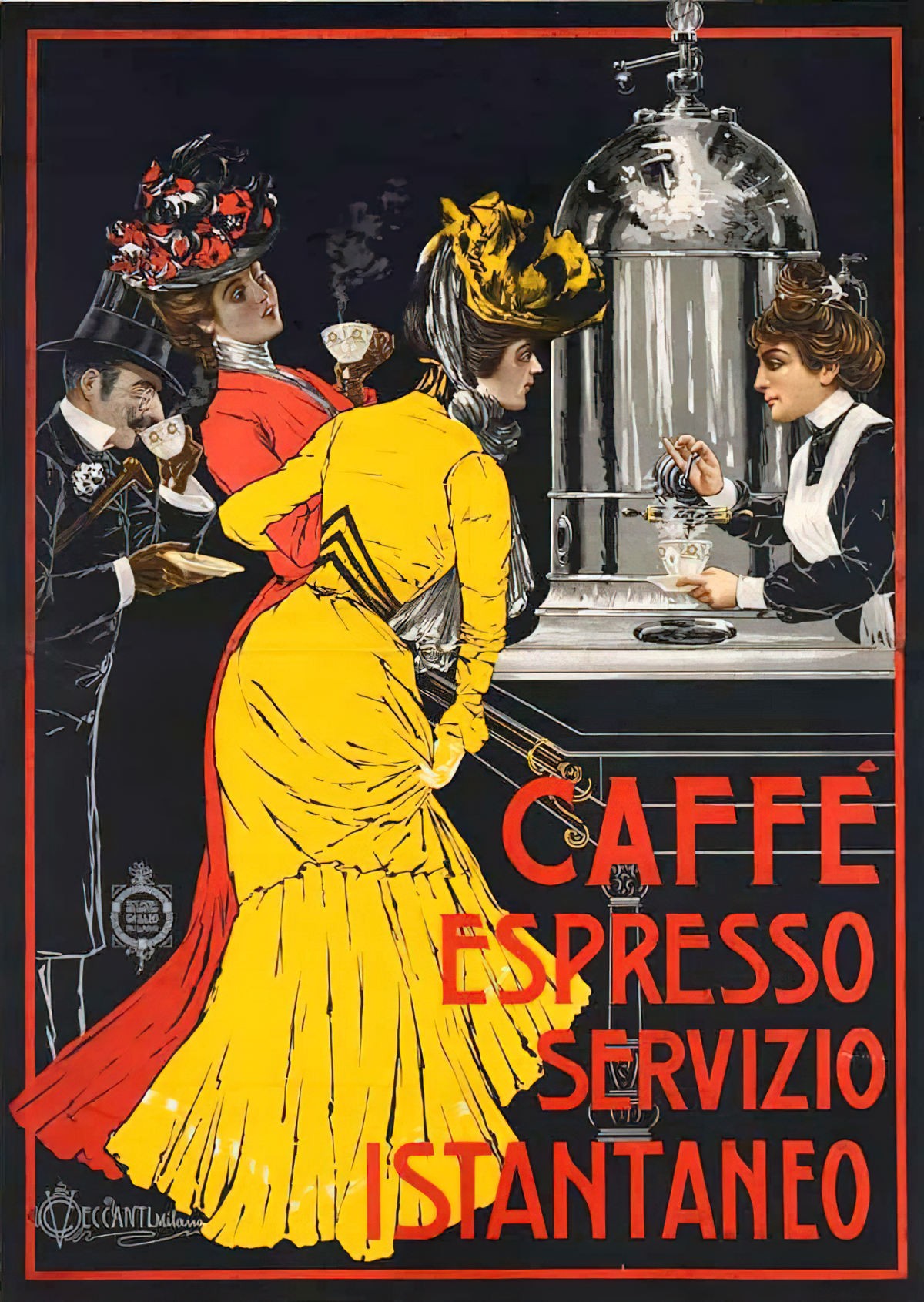
At this point, Beatrice unpins her lilies of the valley. She is taking off her ‘mask’ of purity and innocence. Mansfield chooses a slightly unusual ‘body language beat‘ to garnish this line of dialogue:
She unpinned the lilies-of-the-valley and lay back, drawing them across her eyes.
But this is not just a ‘beat’ — by drawing these symbols of innocence across her eyes she is drawing attention to the fact that our narrator has been blind.
NEW SITUATION
We had very little backstory about these characters. Completely in line with that, they depart from the stage/page as abruptly as they came onto it. Mansfield offers no hint about what happens next. We can extrapolate that this narrator will never be so heavily enamoured about anyone again, and certainly not when it comes to Beatrice.
FURTHER READING
Brindle, Kym. “‘Mysterious Epistles’: Letters Home in Katherine Mansfield’s Short Stories.” Journal of New Zealand Literature (JNZL), no. 38.2 (2020): 15–35. https://www.jstor.org/stable/26944126.
Header painting: F.X. Leyendecker (brother of J.C. Leyendecker) – Rachel Peace
